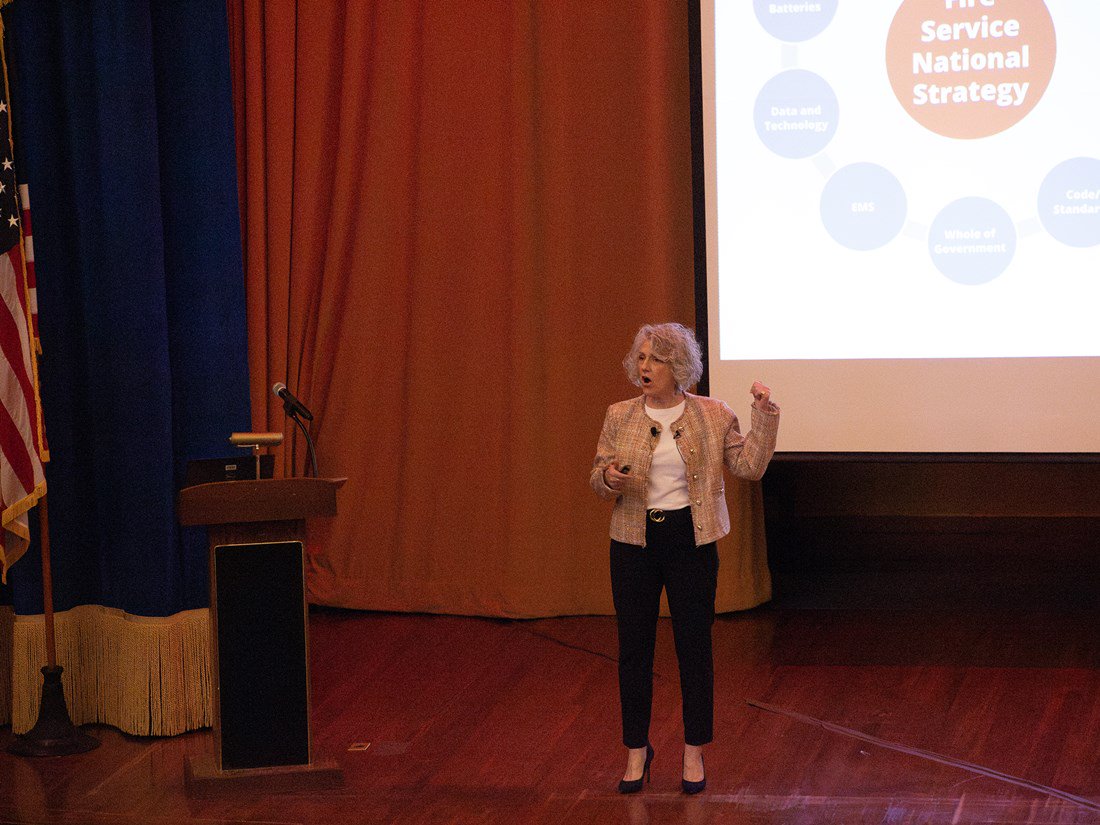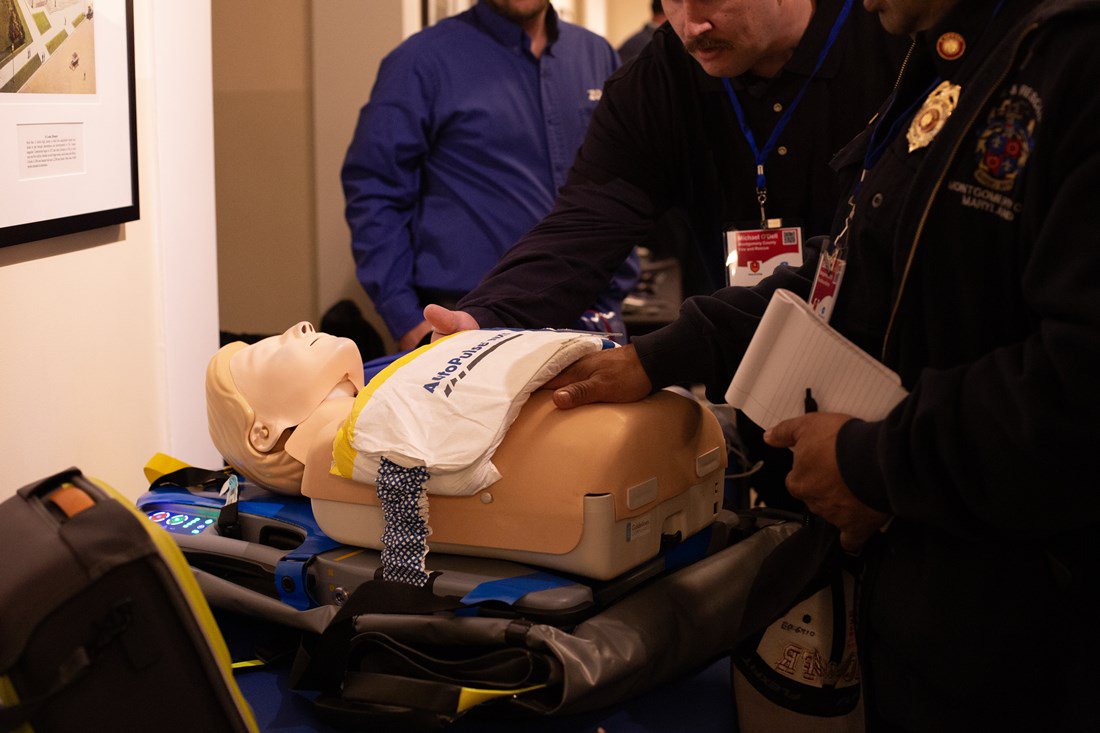First responders, emergency managers, elected officials, and a wide range of representatives from other disciplines gathered in the last several weeks at several regional events focused on enhancing the region’s ability to respond to emergencies.
As firefighters work to keep residents of metropolitan Washington safe, regional leaders are also coordinating to ensure the health and wellbeing of these public safety professionals—both in the line of duty and beyond.
At the biennial COG Fire Health and Safety Symposium, held this year at the Masonic National Memorial in Alexandria, VA, nearly 300 fire officials from across the region’s 24 local jurisdictions gathered to discuss several topics impacting the lives of those in the fire service, including mental health, increased cancer risks from chemical exposures, situational awareness during an emergency, physical wellbeing and nutrition, and more.
The two-day event featured several renowned speakers and presenters, including U.S. Deputy Fire Administrator Tanya Hoover, who provided an overview of the agency’s national emergency response strategy and shared information on efforts to bolster data-collection and analysis on a national scale.

U.S. Deputy Fire Administrator Tanya Hoover presents at the 2024 Fire Health and Safety Symposium.
Just as fire departments across the region coordinate closely to provide aid during an emergency, the event underscored the importance of localities working together to meet the needs of those on the front lines.
Responding to cancer in the fire service
As more information becomes available regarding the health effects of PFAS chemicals in flame retardants, education and advocacy on a multi-level scale is essential for ensuring adequate mitigation strategies are implemented to limit exposures and protect the health of firefighters. Patrick Morrison, Assistant to the General President for Occupational Health, Safety and Medicine at the International Association of Fire Fighters, shared efforts to increase awareness of the issue among U.S. legislators to secure more resources to mitigate risk to firefighters.
These cancers can often go undetected, so increased awareness and testing opportunities within departments are a key part of ensuring positive health outcomes for firefighters. To support these efforts, esophageal testing was provided free-of-charge to symposium attendees.
Cross-jurisdictional support for individual and organizational growth
Reflection and analyses after a call is responded to is just as important as preparation before emergencies, said Chief John Tippett with the National Fallen Firefighters Foundation, who led attendees through a discussion on assessing risk and maintaining orientation while responding to structure fires at the symposium. Tippett emphasized that every fire emergency provides first responders with an opportunity to further hone skills and best practices, and working across departments through avenues such as COG allows for additional perspectives and expertise to highlight lessons learned and guide professional growth.
With dozens of vendors also in attendance, the event provided an opportunity for fire personnel to assess state of the art equipment and technology available to fire departments. Since the 1970s, COG’s Cooperative Purchasing Program has facilitated the purchase of equipment for agencies across metropolitan Washington by leveraging the combined purchasing power of its members to take advantage of bulk discounting. This system reduces overall cost to agencies throughout the region and helps ensure these departments are supplied with the latest equipment and technology that responds to emerging needs, including personal protective equipment for first responders that provides better protection against carcinogens.
Through the Cooperative Purchasing Program, COG-led solicitation has secured several awards to provide over 300 different EMS supplies, search and rescue software, self-contained breathing apparatus, and trainings for public safety professionals.

First responders from the region's local jurisdictions test out life saving equipment at the 2024 Fire Health and Safety Symposium.
Convening leaders to prepare for the next emergency
In addition to the symposium for fire officials, COG recently coordinated two tabletop exercises focused on coordinating regionally across multiple agencies during emergencies.
COG’s Emergency Preparedness Council, a multi-sector group, hosted an exercise in collaboration with the U.S. Department of Energy on an emergency scenario involving energy disruptions building on a similar exercise for the COG Chief Administrative Officers Committee earlier in the winter. The exercise, which involved several elected officials, examined their ability to communicate with each other during emergencies and enhance how they can help share information with their constituents.
Additionally, COG partnered with DC HSEMA and the Cybersecurity and Infrastructure Security Agency (CISA) to host a National Capital Region (NCR) Water Supply Tabletop Exercise (TTX). Focused on a hypothetical incident around local water systems, the exercise provided an opportunity for more than a dozen participating agencies to review roles and capabilities to help keep the public’s drinking water safe, become more resilient through inter-agency collaboration, and test responses to water system threats while focusing on the interconnectedness of water utilities, incident response, continuity plans, customer support, water distribution, and public messaging.
On March 18, COG's SWAT and Public Order Subcommittees, together with the NCR Watch Desk, also met at COG headquarters and conducted a communications exercise using the Regional Incident Communication and Coordination System (RICCS) to test the regional process of requesting law enforcement mutual aid.
These exercises were a few of several such activities hosted at COG throughout each year to foster inter-jurisdictional collaboration and identify regional strengths, vulnerabilities, and opportunities. By working together, public safety agencies are better equipped with tools and support needed to keep both residents and dedicated first responders safe.
MORE: Press release on COG, CISA, DC HSEMA joint training exercise